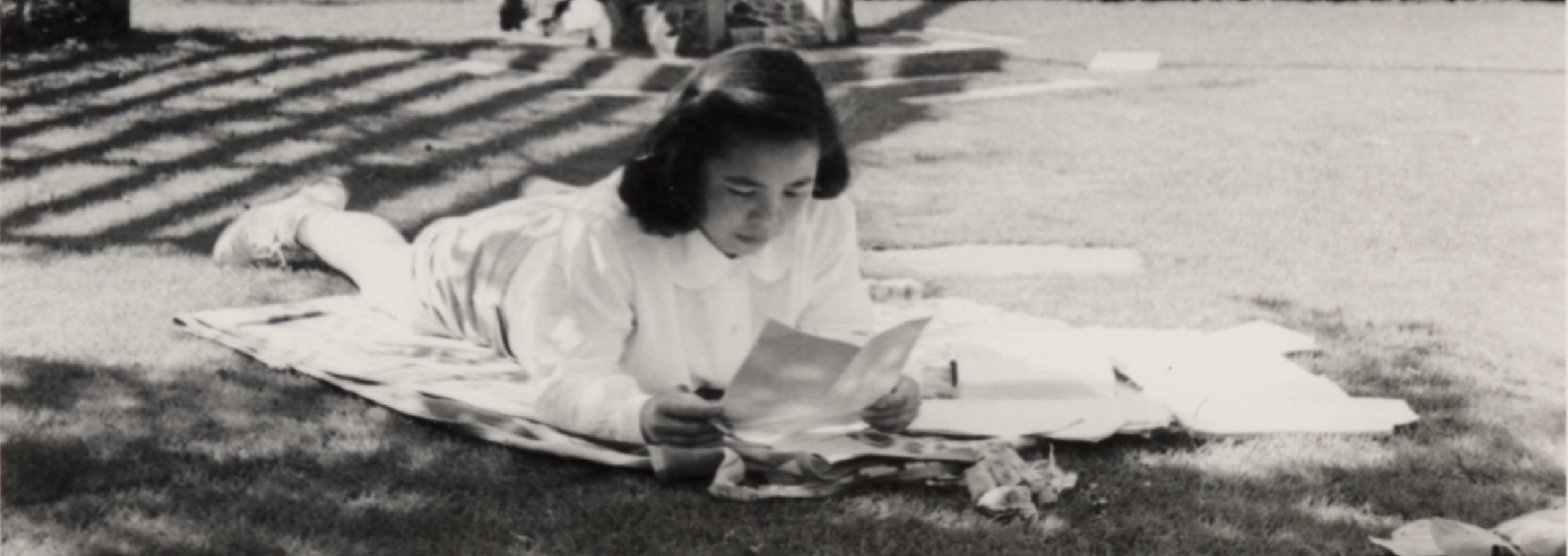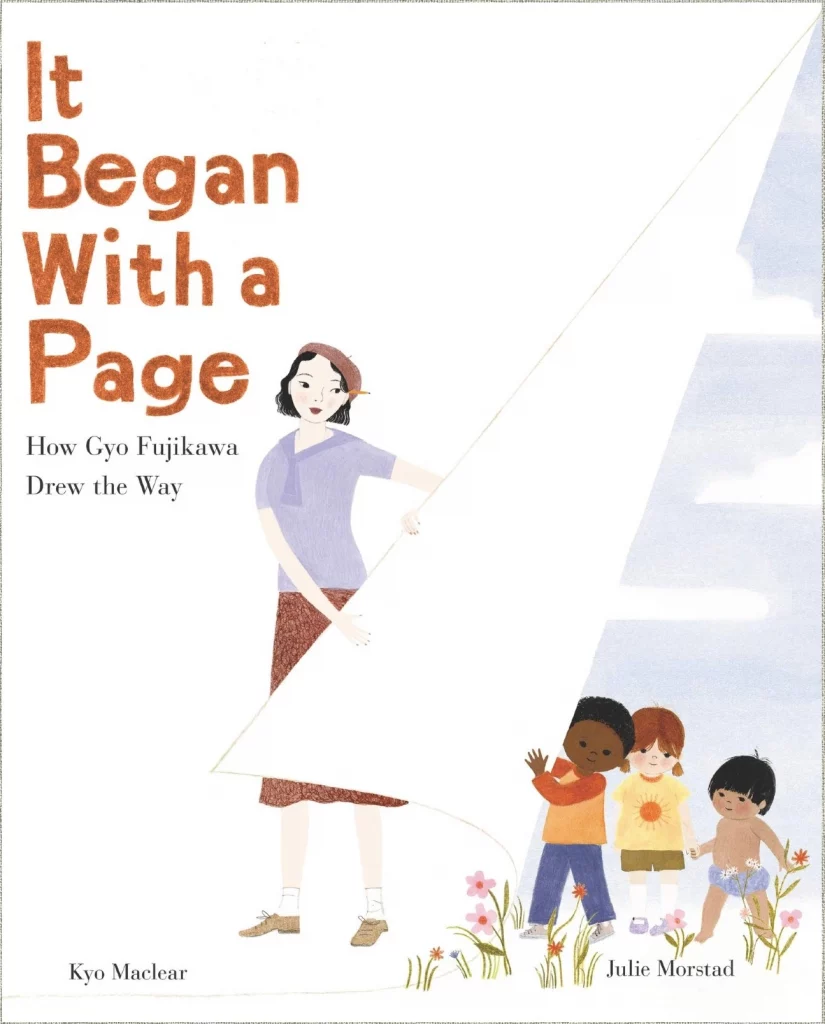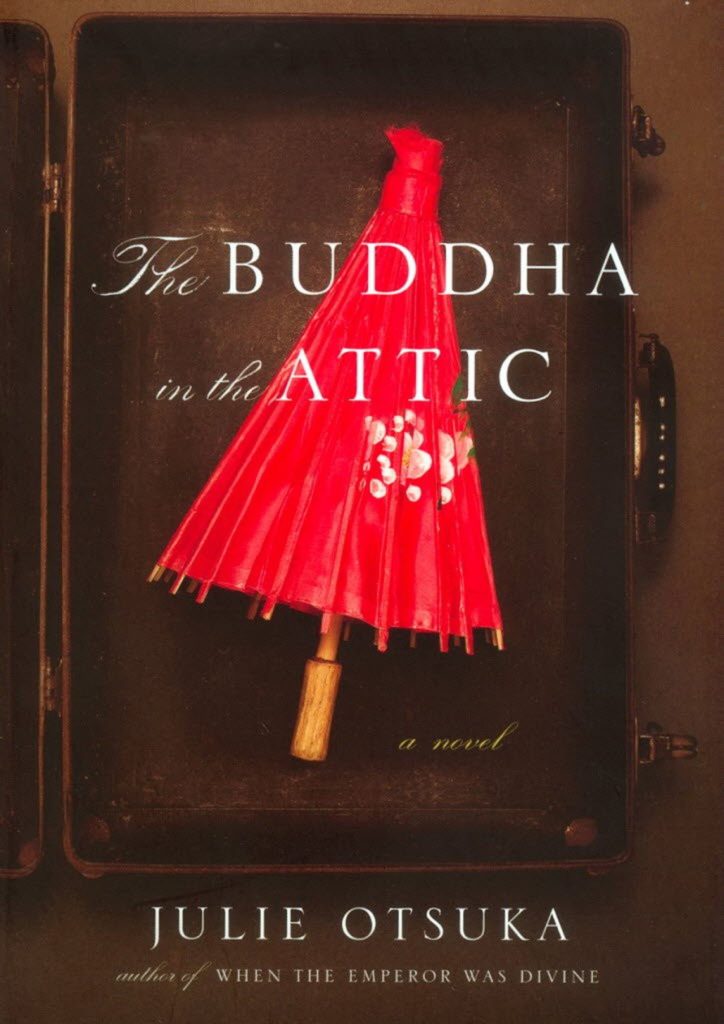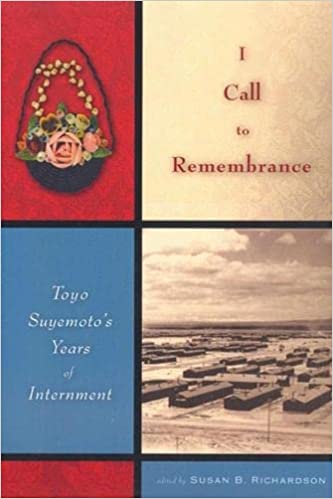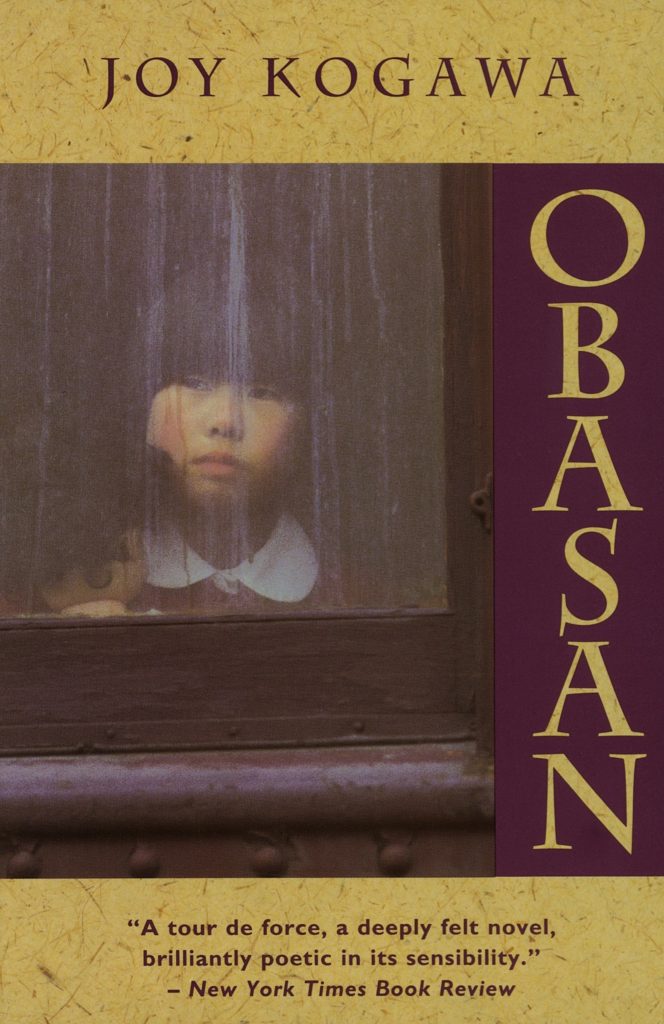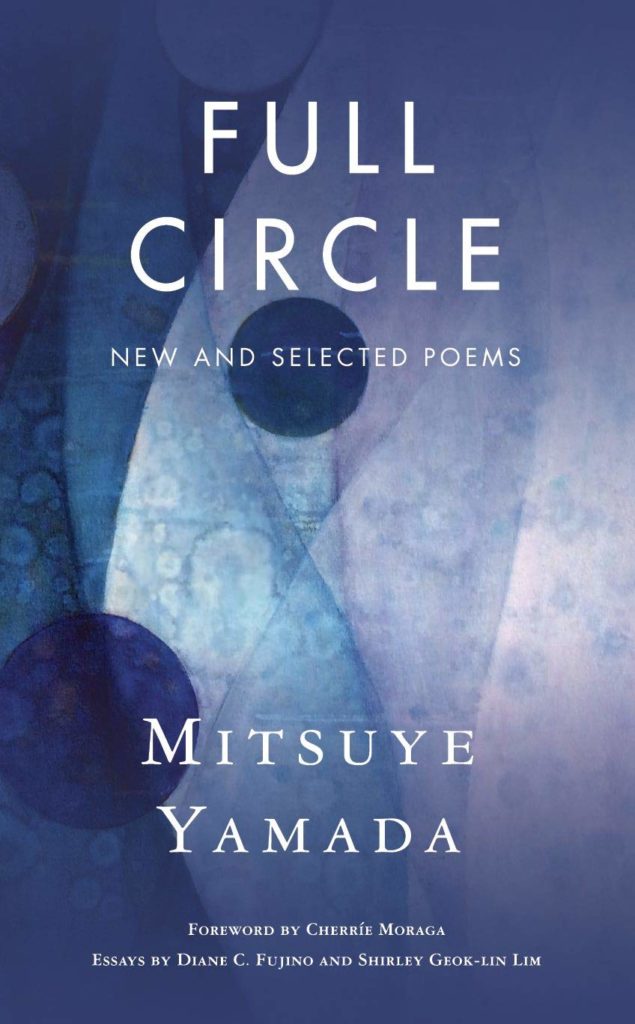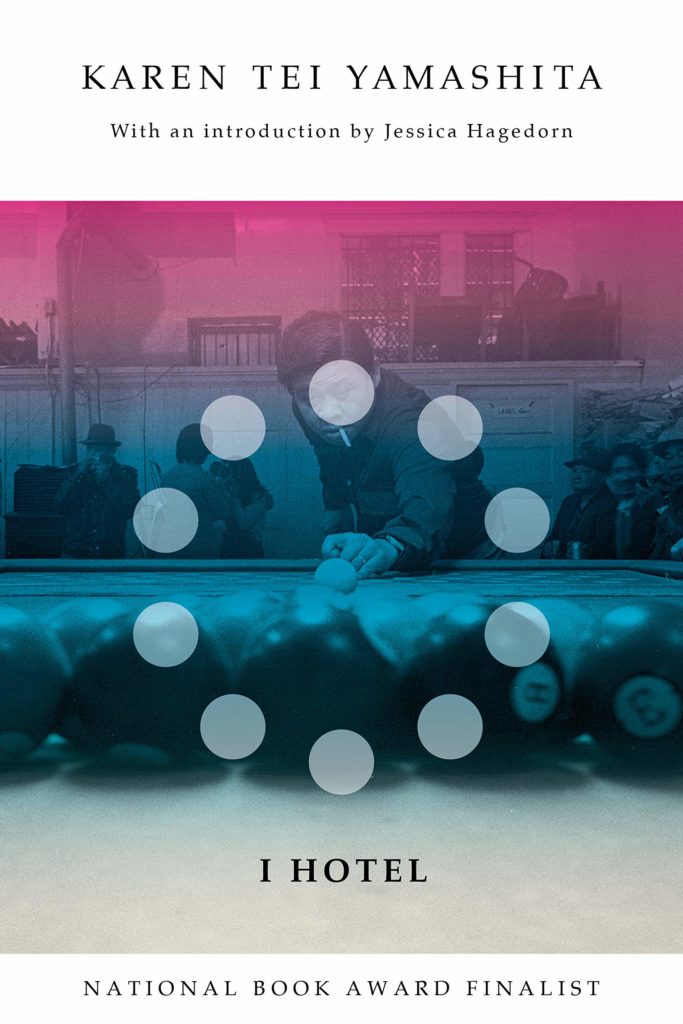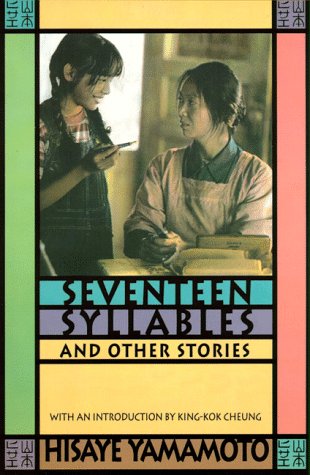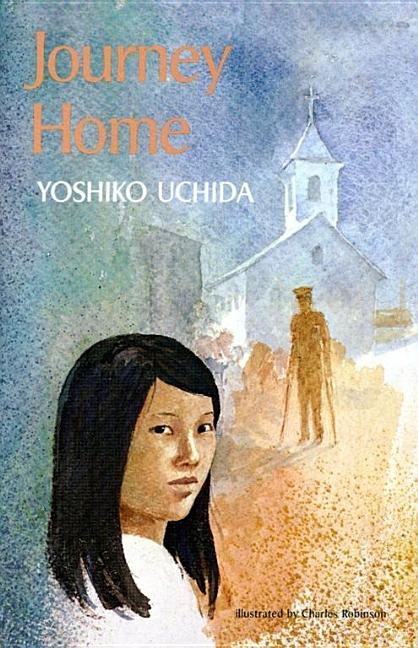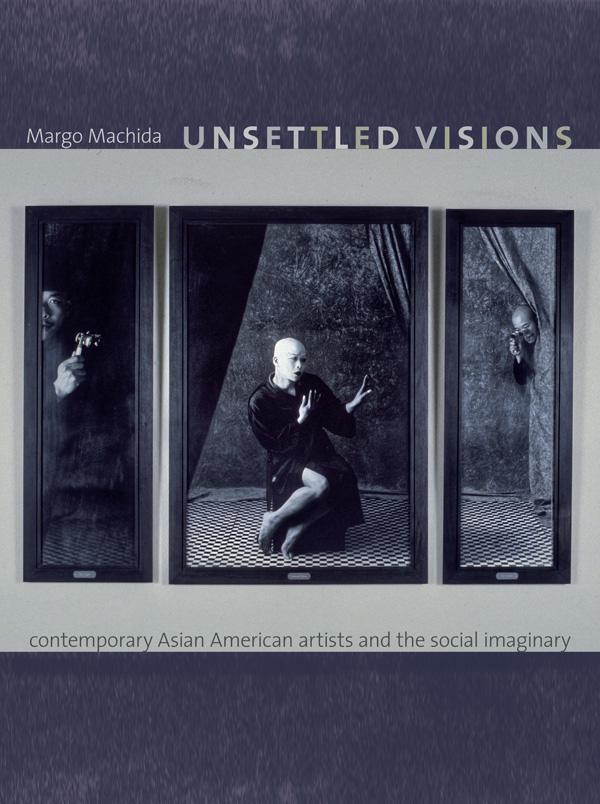March 15, 2022
We asked writers, teachers, artists, and activists to help curate a special Women’s History Month reading list featuring books by Nikkei women authors. They came up with a phenomenal list of classic and contemporary memoirs, biographies, poetry, art critique, and more. Check out their recommendations to find out why these must-reads should be on your radar this month and every month!
It Began with a Page: How Gyo Fujikawa Drew the Way by Kyo Maclear
Joemy Ito-Gates, Bay Area ethnic studies educator and mother recommends this “biography for all ages”:
“It Began With a Page, written by Japanese Canadian children’s book author Kyo Maclear, is a celebration of a Japanese American woman unapologetically and colorfully carving out her own path in a world of white supremacy. In her book, Maclear tells the story of children’s book author and illustrator Gyo Fujikawa, whose family was impacted by World War II incarceration as well as the white washed publishing industry. Fujikawa, who is known for her joyful, colorful illustrations of babies and children of all different races and ethnicities playing together, was told by the publishers of her time to stop drawing integrated play scenes. She boldly refused saying, ‘It shouldn’t be that way. Not out there in the streets. Not here on this page. We need to break the rules.’
“Kyo Maclear’s book about Gyo Fujikawa invites all of us to live our lives in full color and to speak out with our voices, pens, colored pencils, and paint brushes.”
The Buddha in the Attic by Julie Otsuka
In her second novel, Julie Otsuka—author of the best-selling When the Emperor Was Divine—recreates the lives of Issei women who immigrated to the United States as picture brides. She follows the women as they arrive in California and meet their husbands for the first time, learn how to navigate the racial hierarchy of their new home, raise American children and struggle to pass on their language and culture, and finally, as they prepare to be “disappeared” during WWII.
This recommendation comes from Karen Maeda Allman, bookseller and author events co-coordinator at Elliott Bay Book Company: “We know so little about the Issei Picture Brides and this beautifully written novel conveys so much about their lives. Rather than giving us a more detailed account about a single woman’s life, she gives us a collective portrait of the lives, backgrounds and fates of this generation of women. A sublime book, well worth reading.”
I Call to Remembrance: Toyo Suyemoto’s Years of Internment by Toyo Suyemoto
Mira Shimabukuro, a poet, writer, and Teaching Professor in the School of Interdisciplinary Arts and Sciences at University of Washington, Bothell, recommends this “edited memoir interwoven with poems by Suyemoto, a Nisei poet once hailed as ‘Japanese America’s poet laureate.’” The memoir, published posthumously in 2007, chronicles Toyo Suyemoto’s incarceration at Tanforan and Topaz, including the premature death of her young son and the ways she and other Japanese American incarcerees struggled to adapt to life in camp. “The poetry and memoir are a must read for those interested in camp writing and memory.”
Obasan by Joy Kogawa
Joy Kogawa’s semi-autobiographical novel Obasan tells one Japanese Canadian family’s story of WWII exclusion and incarceration, following Naomi Nakane as she attempts to reconstruct long-buried childhood memories while caring for her aunt Aya. Kogawa herself was sent to the Slocan City detention camp during WWII as a child, eventually resettling in Alberta with her family and going on to become a teacher, like Naomi.
Legendary poet, feminist writer, and activist Mitsuye Yamada describes Obasan as “my favorite book of all time. It is poetically written. A work of art.”
Full Circle by Mitsuye Yamada
Speaking of legendary writer Mitsuye Yamada, Tessaku creator Diana Tsuchida recommends her latest collection, Full Circle:
“I was honored to be part of [Yamada’s] book launch presentation for Full Circle, and to be in the room with this groundbreaking Nisei writer reading her poetry live to an audience was witnessing living history. Her poetry encapsulates all the nuances, challenges, and great responsibility of what it means to be a racialized woman navigating many spaces at once, and though she speaks about these topics in the context of postwar tensions or dynamics, the themes remain relevant to today. I think this is a great gift for people who want to reflect on this history through the lens of poetry.”
I Hotel by Karen Tei Yamashita
As the title suggests, Yamashita’s 600-page epic novel I Hotel centers around San Francisco’s International Hotel and the decade-long fight to save it from the “urban renewal” that destroyed much of the city’s historic Manilatown and Japantown—which ended in the violent eviction of nearly 200 residents by police in August 1977. In ten connected novellas, Yamashita tells a story of San Francisco’s burgeoning Asian American movement through a multi-ethnic cast of student activists, labor organizers, and other revolutionaries who come to join the I-Hotel fight.
Community educator and organizer Miya Sommers writes, “I want to celebrate Karen Tei Yamashita and her receiving the 2021 Medal for Distinguished Contribution to American Letters from The National Book Foundation by recommending her book, I Hotel. I Hotel is a monumental work that provides a powerful look into the foundations of the Asian American movement while her creative style inspires action and interdependence for today.”
Seventeen Syllables by Hisaye Yamamoto
Vince Schleitwiler, who teaches Japanese American studies and comparative ethnic studies at the University of Washington, recommends this classic collection of short stories by the renowned Nisei writer Hisaye Yamamoto:
“Few writers with such reserve have voices as distinctive as Hisaye Yamamoto’s, but when I first read her collection, Seventeen Syllables, I recognized the Nisei auntie accent immediately—disarmingly modest yet effortlessly devastating, with depths of intelligence and ethical seriousness that reveal themselves quietly, like a far-off echo in the dark. Every time I’ve returned to her book in the decades since, I’ve been chastened again by how much more she was saying than I’d understood, and how far readers still are from catching up to her accomplishments. Though she preferred to paint on small canvases, Yamamoto’s Nisei feminism is a universe so much bigger than your own.”
Journey Home by Yoshiko Uchida
In this sequel to her young adult novel Journey to Topaz, the acclaimed, if underappreciated, author Yoshiko Uchida follows twelve-year-old Yuki Sakane as her family leaves Topaz concentration camp for Salt Lake City and later, when the West Coast is reopened to Japanese Americans in 1945, returns to the Bay Area. Loosely based on Uchida’s own wartime experiences, Journey Home illustrates many of the hardships of the resettlement period in Yuki’s parents’ struggle to find work and housing, racist abuse from their Salt Lake City landlord, and acts of vandalism against the Sakanes and other Japanese Americans.
Tamiko Nimura, creative nonfiction writer, public historian, and co-author of the graphic novel We Hereby Refuse, writes, “I really believe that Yoshiko Uchida’s books are still some of the very best about the wartime incarceration. I’m going to recommend Journey Home as we shift some of our collective focus to the aftermath of the incarceration. I met Ms. Uchida at an event when I was in 5th grade, and I got a signed copy. My Nisei dad was there too, and I’m so glad we both got to meet her, just before he passed away.”
Unsettled Visions: Contemporary Asian American Artists and the Social Imaginary by Margo Machida
In Unsettled Visions, activist, curator, and scholar Margo Machida explores works from several artists of Chinese, Filipino, Indian, Vietnamese, Korean, and Japanese descent, contextualizing them within larger conversations around Asian American identity, history, and art.
New York based visual artist Tomie Arai writes, “Margo Machida’s Unsettled Visions: Contemporary Asian American Artists and the Social Imaginary is an important and foundational introduction to Asian American contemporary art—I highly recommend this book for artists, students of art history and curators seeking to understand the social forces that have shaped the development and growth of a powerful A/P/A cultural movement.”
—
[Header: An unidentified woman reading on the grass. Courtesy of Yuriko Domoto Tsukada Collection.]
